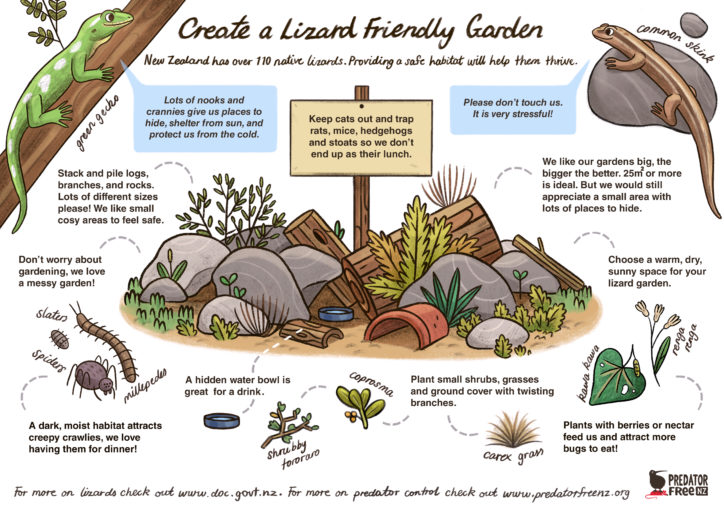Love the idea of attracting native wildlife into your backyard? Here are 5 ways to make your garden a safe haven.
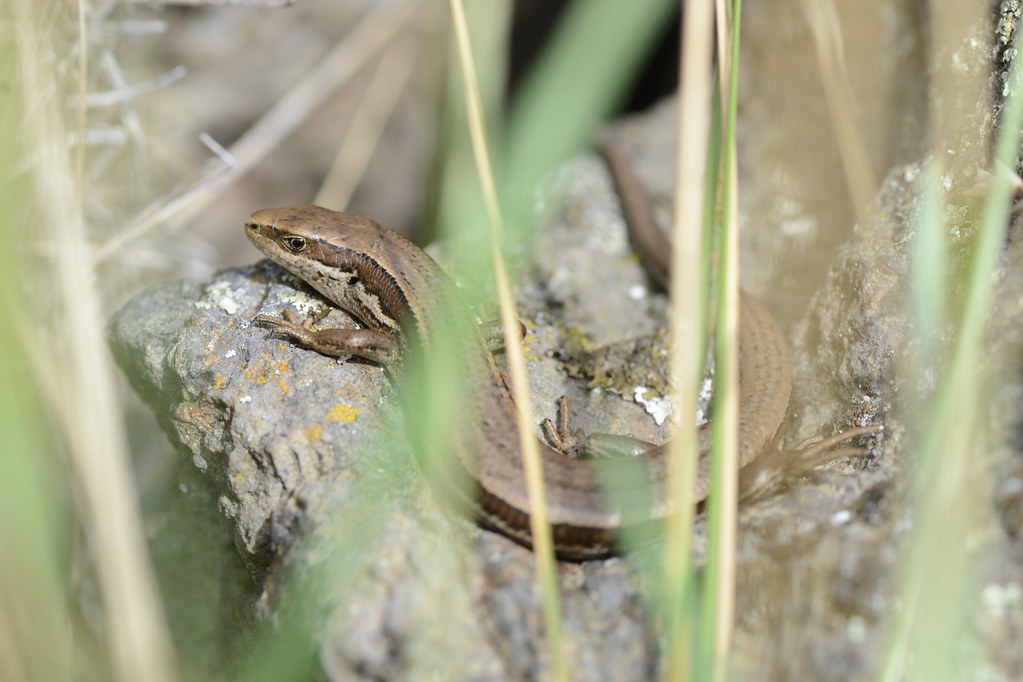
1. Trap rats
Attracting native species to your backyard is great but make sure it’s a safe place for the birds, bugs and lizards that visit.
Rats prey upon native birds, chicks and eggs, our native snails, lizards and insects like wētā. Putting a smartly-placed rat trap in your backyard will help protect our native species.
Rats are very cautious creatures, so even if you don’t see them, chances are they are hiding somewhere near your home.
Learn more about trapping rats in your backyard from our helpful guide.
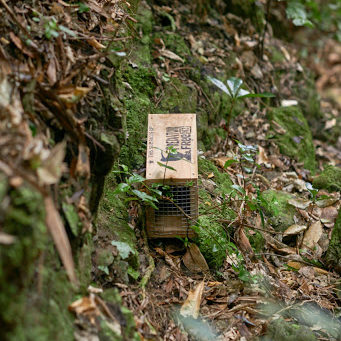
2. Plant for nectar, fruit, foliage and insect eaters
With a little forethought, the plants in your garden can provide food, shelter and nesting sites and materials for birds, bugs and lizards.
Here are some tips for planting a range of native trees and shrubs that will provide food for a range of different species:
For nectar, fruit and foliage eaters
A variety of flowering and fruiting plants will give visiting native species year-round food.
That doesn’t just mean feathery friends. Lizards supplement their diet with berries too, so plant some species that produce fruit small enough to be a lizard’s lunch e.g coprosma, muehlenbeckia, melicytus or gaultheria.
Kōwhai, pūriri and kohekohe are great in the garden because they can provide food in colder months when food is most scarce. The Department of Conservation has a month by month calendar of native plants and when they produce nectar/seeds/fruit.
For insects and the birds that eat them
Plant multi-layered vegetation: ground covers, shrubs, trees and climbers. A good way to get started is to make note of the natives in your area that are busy with insect life.
Tī kōuka (cabbage tree), harakeke (flax), hebe and houhere (hoheria) are native plants that can attract insects.
For lizards, providing plants that flower close to the ground can bring insects and flies within their reach.
For bird nesting sites and materials
Finely branched shrubs such as kanuka, mānuka, māpou and kōhūhū provide nesting sites and materials for birds like tūī, riroriro (grey warbler) and pīwakawaka (fantail).
If you’ve ever wondered… if our native birds were gardeners, what would they plant? See our article that answers that question.
A variety of flowering and fruiting plants will give visiting native species year-round food.
That doesn’t just mean feathery friends. Lizards supplement their diet with berries too, so plant some species that produce fruit small enough to be a lizard’s lunch e.g coprosma, muehlenbeckia, melicytus or gaultheria.

3. Keep your cat safe inside
Did you know that outdoor cats are exposed to far more dangers than indoor cats and therefore have a lower life expectancy?
Caring for the native species visiting your garden means caring for your cat.
The SPCA believe that all cats should be indoor cats. However, there are ways to make outdoor activity healthy and safe. Cats can be walked outdoors on leashes. Another option is screened-in porches or outdoor cat enclosures (sometimes known as ‘catios’), which can make your cat feel like they are outside without exposing them to any outside dangers.
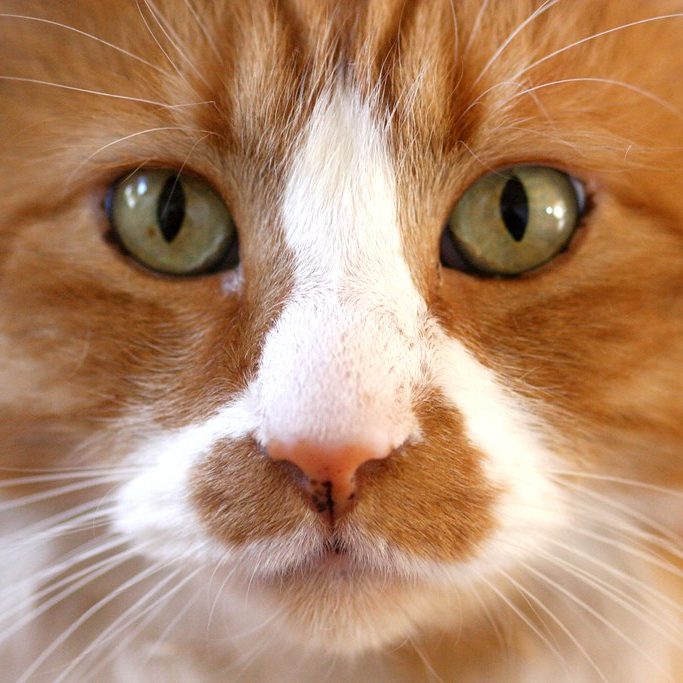

4. Provide water in summer and sugar water in winter
In the winter months, nectar sources can be scarce. Research shows feeding has potential benefits for native birds, but also risks, so it’s important to do it right. Using a sugar water feeder can attract hungry nectar-feeding birds like:
- Tūī
- Kākā
- Korimako (bellbird)
- Tauhou (waxeye)
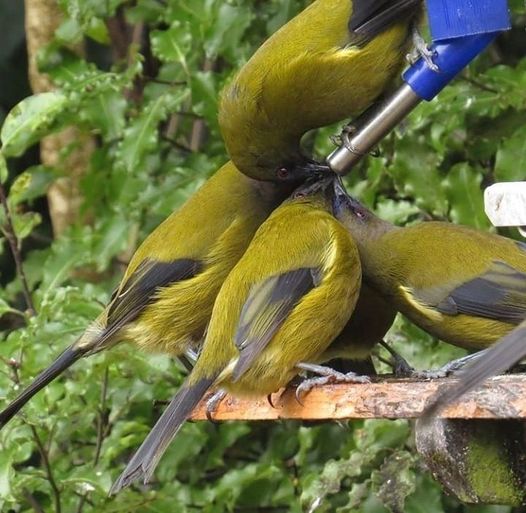
5. Keep your garden messy
When leaves fall off your plants and shrubs, allow them to accumulate. A thick layer of leaf litter will attract insects like spiders, moths and beetles. If you’re interested in having wētā visit your backyard, they love leaf litter, rotten logs and tree holes.
There are several reasons why opting for a messier garden over a well-kempt lawn is a good way to attract native species like insects, insect-eaters and lizards.
Doing things to attract insects will, in turn, attract insect-eating birds like pīwakawaka and riroriro (grey warbler).
Another bonus to a messy garden is lizards. Our native lizards love messy gardens because they offer shelter and lots of hidey-holes. A piece of corrugated iron is the perfect home for a skink. Geckos and skinks will become regular visitors where there is shelter like low-growing creepers, shrubs, rocks and logs.
Check out our guide on making a lizard-friendly garden (PDF, 2MB).
